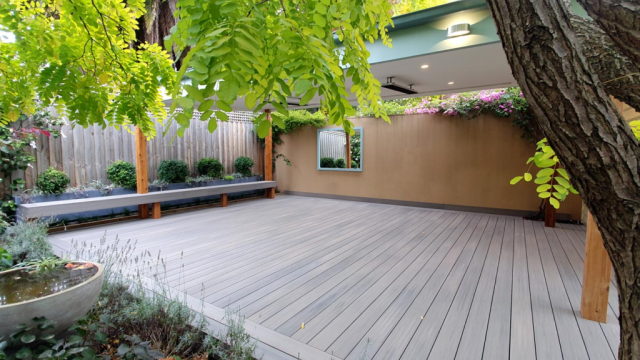
Decks provide a beautiful space for relaxation, entertainment, and enjoying the outdoors. Over time, however, exposure to the elements can cause significant wear and tear on the surface. Whether your deck is made of wood, composite, or another material, the good news is that you don’t always need to replace it entirely. Deck resurfacing is an excellent solution to restore the appearance and functionality of your outdoor space. This article will explore the benefits, process, and considerations involved in deck resurfacing.
What is Deck Resurfacing?
Deck resurfacing involves replacing the top layer or surface of a worn-out deck without tearing down the entire structure. It’s a cost-effective and environmentally friendly way to breathe new life into a deck that has seen better days. Whether your deck is made of wood or composite materials, resurfacing can help you restore its original beauty without the need for costly demolition or full replacement.
Why Choose Deck Resurfacing?
There are several compelling reasons to consider deck resurfacing:
1. Cost-Effective Solution
Replacing an entire deck can be an expensive project. Deck resurfacing, on the other hand, is a fraction of the cost and can provide almost the same visual and functional benefits. The process involves replacing just the worn-out surface, which can save you thousands of dollars in labor and material costs.
2. Quick and Efficient
Deck resurfacing can typically be completed in a matter of days, depending on the size of the deck and the materials being used. This is far quicker than replacing the entire deck, which can take weeks or even longer. You’ll be able to enjoy your refreshed deck much sooner than if you had to go through a full rebuild.
3. Environmentally Friendly
Instead of tearing down your old deck and sending it to a landfill, resurfacing allows you to reuse the existing structure. By only replacing the surface, you’re helping to reduce waste and lessen the environmental impact. This is a sustainable option that supports eco-conscious living.
4. Preserves the Structure
Deck resurfacing allows you to retain the structural integrity of the existing framework. If your deck’s frame is still in good condition, resurfacing is an excellent way to extend its lifespan. This process not only saves money but also reduces the need for frequent repairs or rebuilding.
The Deck Resurfacing Process
Deck resurfacing involves several key steps to ensure the final result is durable and visually appealing. Here’s an overview of the general process:
1. Assessment of the Existing Deck
Before beginning the resurfacing project, a professional contractor will assess the condition of your deck. This involves checking the structural frame, ensuring there are no significant issues such as rot, instability, or pests. If the frame is in good shape, resurfacing can move forward. If the frame needs repairs, it may need to be addressed before resurfacing can proceed.
2. Preparation of the Surface
The old decking material must be removed before the new surface can be installed. This includes pulling up the old boards, cleaning the surface, and inspecting for any damage. The surface must be smooth, clean, and dry for optimal adhesion of the new material.
3. Installation of New Decking Material
Once the old surface has been removed and the frame is prepped, new decking material is installed. Homeowners can choose from a variety of materials, including composite decking, pressure-treated wood, or other options that suit their aesthetic preferences and budget. The new decking is secured to the existing frame using fasteners or clips.
4. Finishing Touches
After the new decking is installed, finishing touches such as sanding, staining, or sealing may be added to enhance the appearance and longevity of the deck. This will help protect it from the elements, prevent discoloration, and ensure that it lasts for years to come.
Key Considerations Before Resurfacing
While deck resurfacing can be a fantastic option, there are a few factors to keep in mind:
1. Material Choice
Choosing the right material for your deck resurfacing project is crucial. Wood offers a natural look but requires more maintenance, while composite materials are low-maintenance and more durable. Your choice will depend on your preferences for aesthetics, budget, and long-term upkeep.
2. Deck Condition
Before deciding on resurfacing, make sure your deck’s structural frame is in good shape. If the frame is damaged or compromised, resurfacing may not be a viable option, and full replacement may be necessary.
3. Local Climate
Consider the climate in your area when choosing materials and finishes. For example, if you live in an area with extreme temperatures, you may need materials that can withstand these conditions without warping or fading.
Conclusion
Deck resurfacing is an excellent way to revitalize your outdoor living space without the high costs and extensive work associated with a full deck replacement. It’s a practical, sustainable, and efficient solution for homeowners looking to restore the beauty and functionality of their decks. By carefully assessing your deck’s condition, choosing the right materials, and hiring a professional contractor, you can enjoy a stunning deck that enhances your home for years to come.




